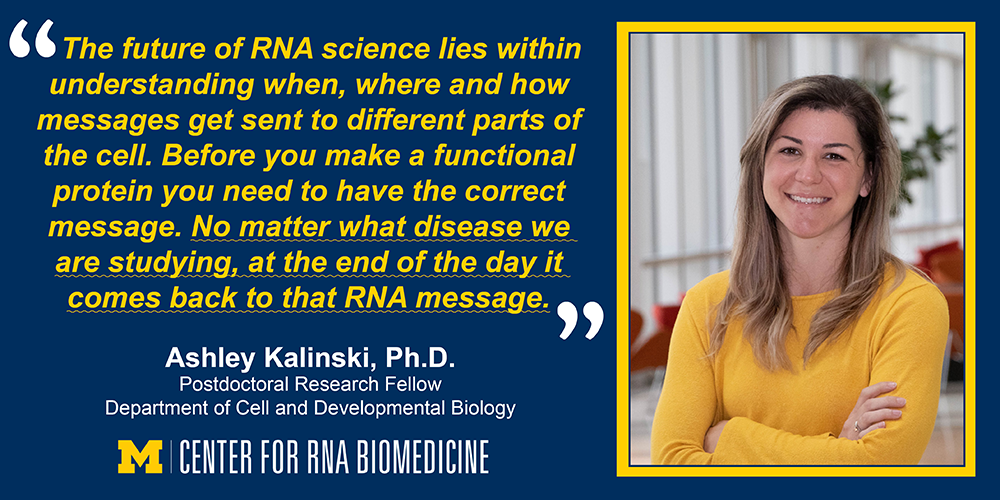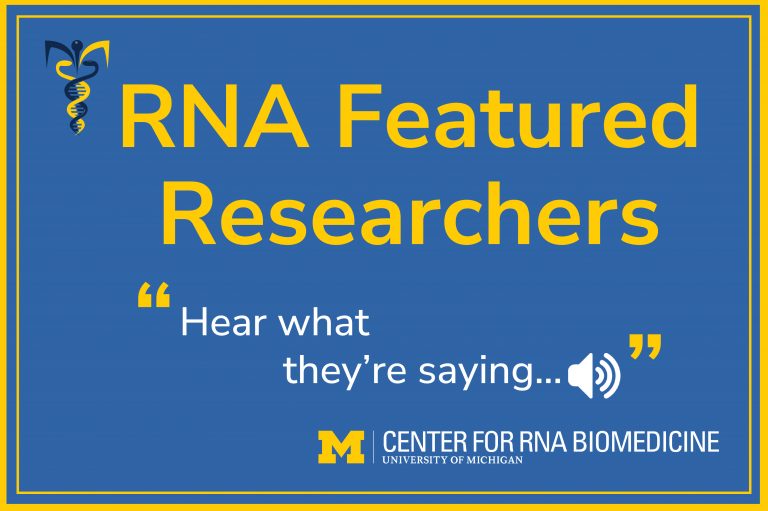RNA Featured Researcher — Ashley Kalinski, Cell & Developmental Biology

Ashley Kalinski, Ph.D.
Research Fellow
Giger Lab
Cell and Developmental Biology
In 2020, Ashley Kalinski was offered an Assistant Professor position at Ball State University.
- Who/what brought you to science?
I remember being completely fascinated with neuroscience from a very young age. However, my real “science moment” didn’t happen for me until graduate school. One class, “Neurobiology of Disease” shifted my focus and this is when I found a passion for research.
- What are your research interests?
I am interested in the mechanisms that lead to or prevent repair after traumatic injury. Specifically, how the axonal compartment of the neuron activates local signaling programs to initiate and sustain a regeneration response. We want to understand when and where messages are sent (in the form of mRNA) and how that message is translated to protein within the axon itself. We further want to elucidate the role the locally translated protein has in the regeneration response and if this is part of the communication between the axon and the surrounding/infiltrating non-neuronal cells.
- What do you hope is the outcome/impact of your research?
My hope is that our work will change the way we think about neuronal injury. We usually consider the cell body of the neuron to be the key to repair, or cell death, but I think there is so much more happening within the compartments of the axon that could provide clues as to why some neurons are more susceptible to disease or injury than others, and I think that key could be the localized mRNA.
- What advice would you give to students who’d like to get more involved in research?
Stop hesitating! Don’t be afraid of contacting labs. If you are nervous about contacting the PI reach out to grad students, postdocs, and lab techs within the labs and just start a conversation. Having passionate students in lab benefits everyone and it’s a great way to add fresh perspectives to our projects.
- What profession other than your own would you like to attempt?
If I wasn’t a scientist, I think I would want to write for a travel magazine. I love traveling and fortunately as a scientist I have been able to visit several countries for conferences, but I think traveling full time would be incredible.

